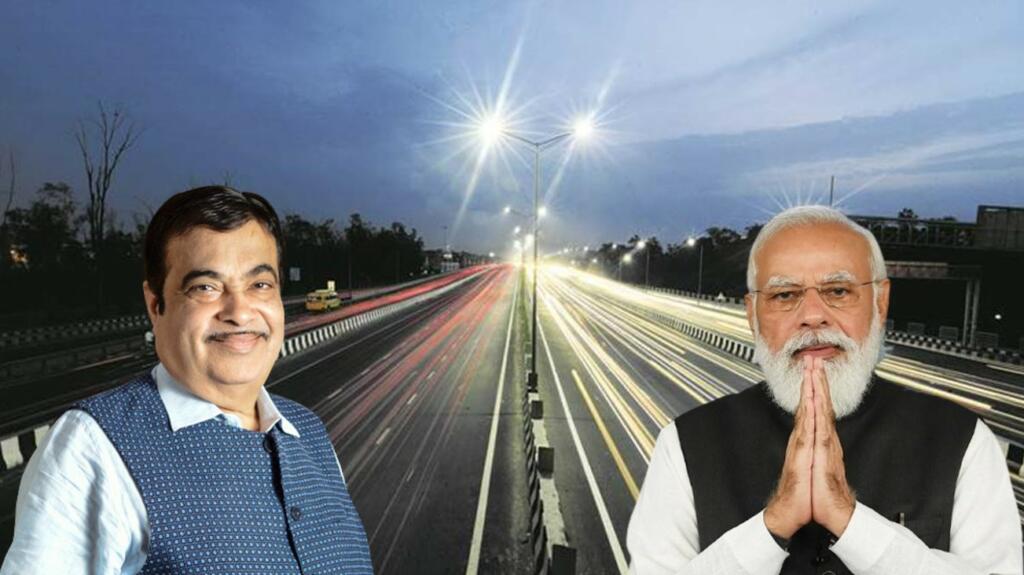- From roads to railways, ports to housing, the allocation for all infrastructure-related sectors went up substantially.
- Nitin Gadkari, the Minister of Road Transport who is on a road-building spree for the last seven years, said that his target is to build 100KM of roads per day.
- The central government’s spending on infrastructure increased exponentially under PM Modi.
- The Modi government made significant investments in public transport, highway construction, railways, waterways, and air connectivity.
In the FY 23 budget, infrastructure has been the focus area of the Modi government. From roads to railways, ports to housing, the allocation for all infrastructure-related sectors went up substantially. As far as the economists are concerned, even the critics of the government praised its focus on infrastructure instead of welfare, even though the party is facing elections in five states.
Nitin Gadkari, the Minister of Road Transport who is on a road-building spree for the last seven years, said that his target is to build 100KM of roads per day. Imagine, at the time of the UPA government, building even 20KM roads per day was a distant dream and today the country aims to achieve 100KM while already reaching around 40.
“Infrastructure (development) is very important for the country…Even during the COVID-19 pandemic, we have made a world record of constructing 38 km of road in a day,” said Nitin Gadkari in a post-budget discussion organized by the Confederation of Indian Industry (CII).
“If any one (contractor) wants to change his bank or financial institution, it takes him 3 months to 1.5 year to take NOC from NHAI…we can make this possible in 2 hours, then why is there a delay for 1.5 years, I am asking this question to officials,” he added. “The problem is that the bureaucratic system never understands the meaning of time,” he opined.
The central government’s spending on infrastructure increased exponentially under PM Modi. In the first year, the government allotted only 1.81 lakh crore rupees for infrastructure, but this increased to 5.97 lakh crore rupees in 2018-19. The spending increased by more than triple with total spending of 19.36 lakh crore rupees in the first five years. In the 2019 general manifesto, BJP promised to spend 144 lakh crore rupees on infrastructure in the next five years, and even in its second term, Nitin Gadkari is leading the infrastructure development drive.
The government has launched various initiatives like Gati Shakti to reduce the time of money needed for transport. Moreover, a lot of infrastructure setup is being monetized to ensure the availability of non-budgetary resources to ministries like railways and Roads.
The Modi government made significant investments in public transport, highway construction, railways, waterways, and air connectivity. The large public investment in infrastructure was supported by the oil bonanza which the government got in its initial years due to a slump in crude prices. The investment in the road construction sector by the UPA government was very low because various welfare programs like MGNREGA had constrained them from financing infrastructure building. But the Modi government is not falling for freebies but building hard infrastructure as well as soft infrastructure (Digital Infrastructure).
Prime Minister Modi is also making efforts to turn infrastructure into an electoral issue. For decades, elections in India have been fought on rampant populism, while freebies became the only criteria for winning. Akhilesh Yadav came to power in UP in 2012 solely on the promise of Laptop distribution; Congress won three states in 2018 (MP, Rajasthan, and Chhattisgarh) on the promise of farm loan waiver. The UPA government tried to wash away all its sins with the Right to Food Act (although it lost).
The allure of freebies has always driven a large part of the population toward the political parties and the fighting election in the name of freebies has been internalized in the political system. Pick up any manifesto of political parties, the majority of the pages are filled with promises of freebies.
If infrastructure creation becomes a major electoral issue in the country, the states ruled by the BJP as well as those ruled by the opposition would invest heavily in building roads, bridges, and so on. And this will start a virtuous cycle of an investment-driven economy, instead of a freebies-led demand-driven economy that kept the country backward for decades.
